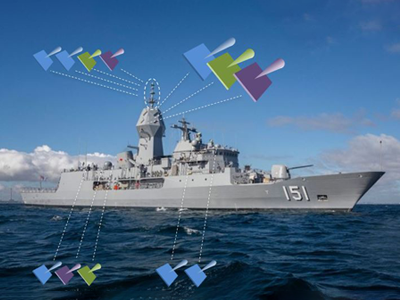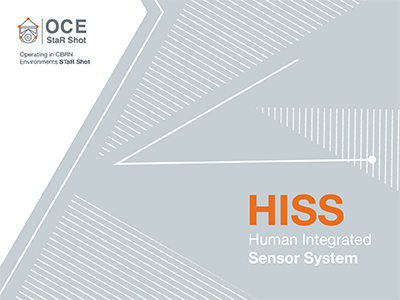How can we use subtle signals from the human body to detect and react to infection (or chemical exposure) before we get sick?
In partnership with DMTC, we are looking for people with experience in sensing systems, advanced biotechnology and data analytics, to share knowledge, experience, and ideas at our Human Integrated Sensor System (HISS) collaborative workshop.
This workshop will be run as part of the Department of Defence’s Operating in Chemical, Biological, Radiological and Nuclear (CBRN) Environments (OCE) STaR Shot. It is one of the core future focused problems Defence and DSTG are prioritising as part of the More, together Defence Science and Technology strategy – the sort of problem that we can’t solve without significant advances in science, technology and research, alone. We want to collaborate with industry and academia to solve this challenge.
The problem
OCE is arguably one of the hardest assignments that our warfighters have. Not only do they have to perform strenuous tasks such as fighting an adversary or supporting civilians in the aftermath of a disaster, they have to do these tasks in the presence of extremely dangerous and most times invisible threats that can spread rapidly and widely if uncontained.
The devastation of CBRN attacks can be harmful not only to our warfighters, but to civilian communities, individuals, flora and fauna including livestock intended for consumption. It is a unique challenge to have to defend against something you may not be able to see, hear, touch or smell.
Currently, more than 30% of the Australian population is locked down due to COVID-19. We can all relate to the challenges associated with controlling the spread of infectious disease and the debilitating effects of outbreaks.
Imagine if we had the capacity to detect infection within hours of exposure, rather than days, by simply probing for cues from our own bodies. It would be a game-changer that would allow us to get ahead of the spread.
This is the type of challenge that the Human Integrated Sensor System (HISS) initiative, a collaboration of the Department of Defence’s Operating in CBRN Environments STaR Shot and the DMTC, seeks to tackle - in the context of Defence but with the view to extend to civilian application (e.g. in Public Health and National Security).
The HISS will draw together leading edge and commercially available wearable sensors and pair them with advanced data analytics approaches to assimilate subtle cues of exposure/infection and give warning before obvious symptoms manifest. This will allow countermeasures to be enacted with greatest effect. Systems are likely to involve heterogeneous networks of sensors and may involve on-skin and/or sub-cutaneous/bio fluid measurement.
What we are looking for
If you have the skills and experience in these areas and are interested in taking part in the HISS collaborative workshop, please submit your interest in our HISS Collaboration Workshop by responding to our RFI below. Or visit our website for more information.
We can’t solve these challenges alone. We want to partner and we want to partner early so that together we can explore what’s possible and co-design our way forward.
RFI Release Documentation





